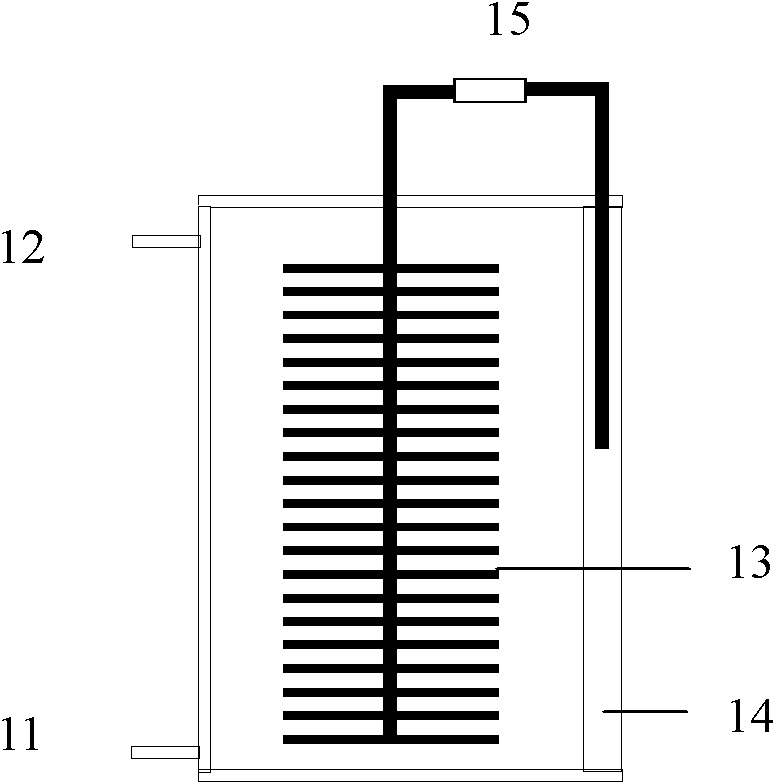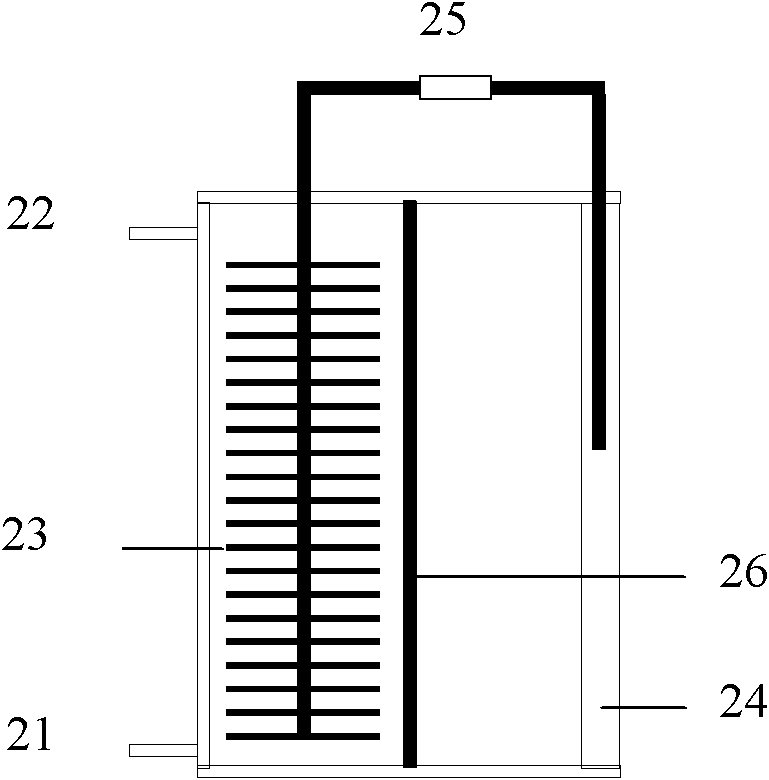Preparation method and application of nitrogen-doped carbon nanotube to preparing cathode of microbial fuel cell of
A fuel cell cathode, nitrogen-doped carbon technology, applied to battery electrodes, circuits, electrical components, etc., to achieve low-cost effects
- Summary
- Abstract
- Description
- Claims
- Application Information
AI Technical Summary
Problems solved by technology
Method used
Image
Examples
Embodiment 1
[0037] Step 1: Electrode Preparation
[0038] Mix nitrogen-doped carbon nanotubes, conductive materials, and binders in a mass ratio of 10:31:63, and add isopropanol reagent for ultrasonic dispersion for 30 minutes; spread the ultrasonic mixture evenly on carbon fiber cloth, and let it dry naturally for 24 minutes. Nitrogen-doped carbon nanotube catalytic electrodes were prepared within hours. Pt / C catalytic electrodes can be prepared by mixing conventional Pt / C catalysts, conductive materials and binders in the same way.
[0039] Step 2: Single-chamber microbial fuel cell performance test
[0040] as attached figure 2 As shown, 15mL of electrogenic microbial bacterial solution was loaded into a single-chamber microbial fuel cell from the inlet, and the nitrogen-doped carbon nanotube catalytic electrode and the Pt / C catalytic electrode prepared above were used as the cathode of the fuel cell. Connect the fuel cell to a 1000-ohm external resistance circuit, start recording ...
Embodiment 2
[0045] Step 1: Electrode Preparation
[0046] The electrode fabrication steps of Example 2 are as described in Example 1.
[0047] Step 2: Dual-chamber microbial fuel cell performance test
[0048] as attached image 3 As shown, 15mL of electrogenic microbial liquid was loaded into the anode of the dual-chamber microbial fuel cell from the inlet, and the nitrogen-doped carbon nanotube catalytic electrode and the Pt / C catalytic electrode prepared above were respectively used as the cathode of the fuel cell. The operating steps of the microbial fuel cell power generation performance test in Example 2 are as described in Example 1. The performance of microbial fuel cells with different catalytic electrodes is shown in Table 2.
[0049] Table 2 Performance comparison of dual-chamber microbial fuel cells with different catalytic electrodes
[0050]
[0051] It can be seen from Table 2 that, compared with conventional Pt / C catalysts, nitrogen-doped carbon nanotubes used as ox...
Embodiment 3
[0053] Step 1: Electrode Preparation
[0054] The electrode fabrication steps of Example 3 are as described in Example 1. The nitrogen-doped carbon nanotubes, the conductive material and the binder are fully mixed according to the mass ratio of 10:15:32.
[0055] Step 2: Single-chamber microbial fuel cell performance test
[0056] The operating steps of the microbial fuel cell power generation performance test in Example 3 are as described in Example 1. The performance of microbial fuel cells with different catalytic electrodes is shown in Table 3.
[0057] Table 3 Performance comparison of single-chamber microbial fuel cells with different catalytic electrodes
[0058]
[0059] It can be seen from Table 3 that compared with conventional Pt / C catalysts, nitrogen-doped carbon nanotubes have higher catalytic activity and stability as oxygen reduction catalysts for single-chamber microbial fuel cells.
PUM
 Login to View More
Login to View More Abstract
Description
Claims
Application Information
 Login to View More
Login to View More - R&D
- Intellectual Property
- Life Sciences
- Materials
- Tech Scout
- Unparalleled Data Quality
- Higher Quality Content
- 60% Fewer Hallucinations
Browse by: Latest US Patents, China's latest patents, Technical Efficacy Thesaurus, Application Domain, Technology Topic, Popular Technical Reports.
© 2025 PatSnap. All rights reserved.Legal|Privacy policy|Modern Slavery Act Transparency Statement|Sitemap|About US| Contact US: help@patsnap.com



